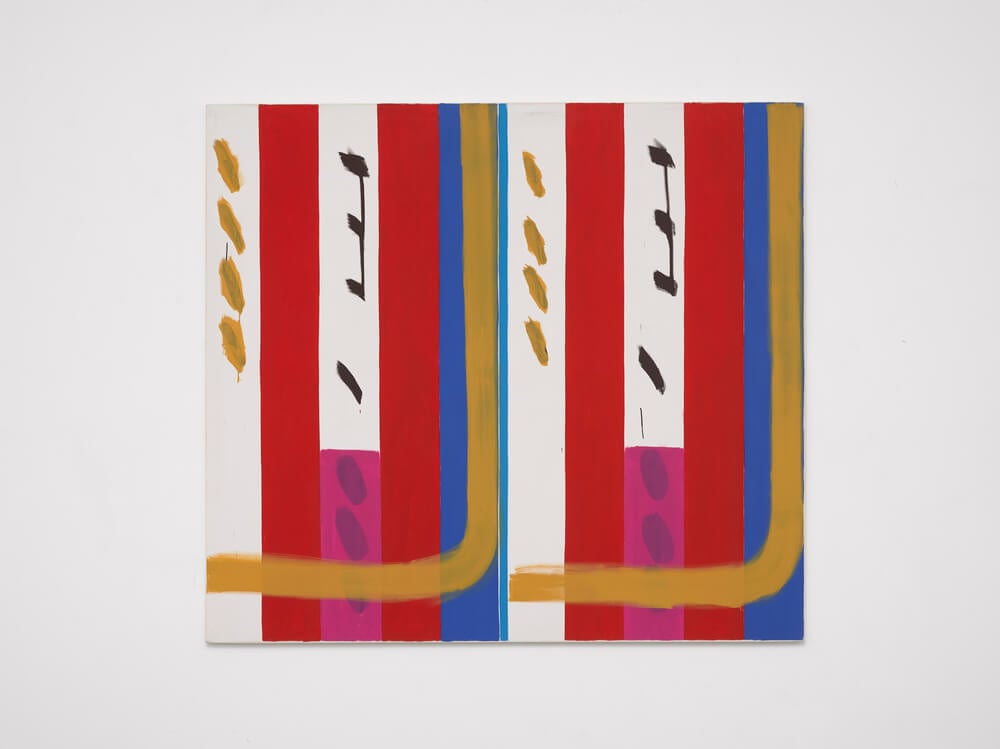
In music, a coda is a particular kind of finale that’s meant to sound at once familiar and innovative. Compositionally, the coda revisits passages from earlier in the score but expands and reworks them here and there to create a more expansive sound. One could consider it the musical equivalent of bringing an essay to its final conclusion.
In his new exhibition, “Coda,” at Lisson Gallery, French artist Bernard Piffaretti uses the idea of the coda to parallel two bodies of work on view; one, a group of paintings he made between 1989 and 1999, and the others, made as a kind of response to these earlier works created over just the past few years.
What all the works share in common is Piffaretti’s signature compositional structure. When starting a new work the artist always begins by painting a single vertical line down the middle of his canvas, spitting it in two. On one side of the line, he then paints a composition, often filled with characteristically loose geometric shapes in bright colors. Then, on the other side, he attempts to recreate the same image, creating a doubling effect.
Bernard Piffaretti, Untitled (2019). Courtesy of Lisson Gallery.
The process is an intentionally imperfect one that allows for chance, changes, and mistakes. Once completed, the viewer cannot help but search out the differences, as the eye darts back and forth between seeing two separate compositions and the unifying larger image. For Piffaretti, the process allows him to reconsider the very composition he’s just created and improvise upon it.
“I believe that this central marking, which is a line that carries on from canvas to canvas, is a bit like the coda symbol in sheet music that indicates that there will be resumption at some point,” the artist has said. “And in my paintings, I know from the start that there will be a resumption and that it is this central marking that will lead to this new beginning.”
Portrait of Bernard Piffaretti. Photo by Justin Westover.
Piffaretti doubles down on this process of return and conceptualization in this exhibition. His new paintings from 2019 and 2020 respond to the earlier canvases, and to themes he was examining some 20 to 30 years ago. Here, his chronological shift mimics the musical coda—revisiting ideas, but layering upon them and intensifying them in such a way as to feel conclusive.
For Piffaretti, the boundaries he creates are arbitrary. Instead, he is most interested in the process of creating an open-ended body that can be returned to again and again, existing in a perpetually unfinished, adaptive state.
“Bernard Piffaretti: Coda” is on view at Lisson Gallery Online through August 23, 2020.